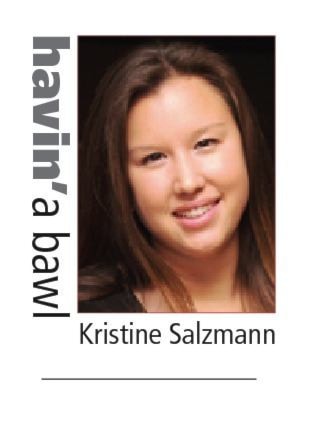I’m gaga for baby sign language.
Earlier this year, I registered for a course in Cloverdale through Surrey Parks, Recreation and Culture, hoping it would enable my daughter Elise to communicate earlier and reduce frustration.
To be honest, I also signed up because I was a little bored and the timing of the class did not disturb her nap schedule.
It was fun. I talked to other new moms, and we met up outside of the class. We were taught hundreds of signs (the same ones used in American Sign language for the deaf and hard of hearing), so to keep from being overwhelmed I chose which ones I thought would be useful to remember and mentally flushed the rest.
At home, I diligently practised these signs in front of Elise, who was six and seven months old during the class. Nothing. As time passed, I dropped most of the signs and just focused on a core few: more, water, milk and eat.
Around her first birthday, something clicked. Elise clumsily signed “more,” asking for more of what we were feeding her. My husband and I were delighted!
“More” has now become ubiquitous for “I want,” and we’re certain it has eliminated a lot of potential frustration.
Now at 16 months old, she has about two dozen signs and picks up one or two more each week, depending on her interest in the subject and our diligence in providing her with new ones.
Animals and foods are her favourite. Among her signs are milk, water, cheese, noodles, berry, bunny, elephant, shoes, sleep, girl, baby, book, poo (to let us know when she’s going), toothbrush (for “brush teeth”), and thank you.
An abstract concept like “thank you” took many weeks while a new animal like “crab” involved just a couple of repetitions. Some signs seem to hold little interest for her, like “bath” (probably because she doesn’t care to ask for one), and others are still too challenging for her chubby little fingers and hands.
She seems just as delighted as we are that her vocabulary is expanding this way, especially when she has less than 10 words she can speak.
She tells us which of her favourite books she wants to read at night by signing “owl” (Il Sung Na’s “Book of Sleep”), or “gorilla” (“My Friends” by Taro Gomi).
Apparently there are long-term benefits as well. Psychologist Dr. Gwyneth Doherty-Sneddon notes that while studies on baby sign language are lacking, what research there is shows signing increases spoken language vocabulary, reduces tantrums, and improves parent-child relationships (thepsychologist.org.uk).
One study that tracked a group of babies found that the more the baby used gestures at 14 months, the larger his or her verbal vocabulary was at 36 months (Meredith Rowe, 2008).
But whether or not sign language will give Elise an advantage in the future isn’t what matters. What matters is that Elise is talking to us – and we can understand and respond.
• To learn about baby sign language courses being offered in Surrey, pick up a leisure guide at your nearest community centre or search the leisure guide online at surrey.ca under Culture and Recreation.
Kristine Salzmann is a former Black Press reporter and mom to 15-month-old baby girl Elise. She writes monthly for The Leader on parenting issues.
